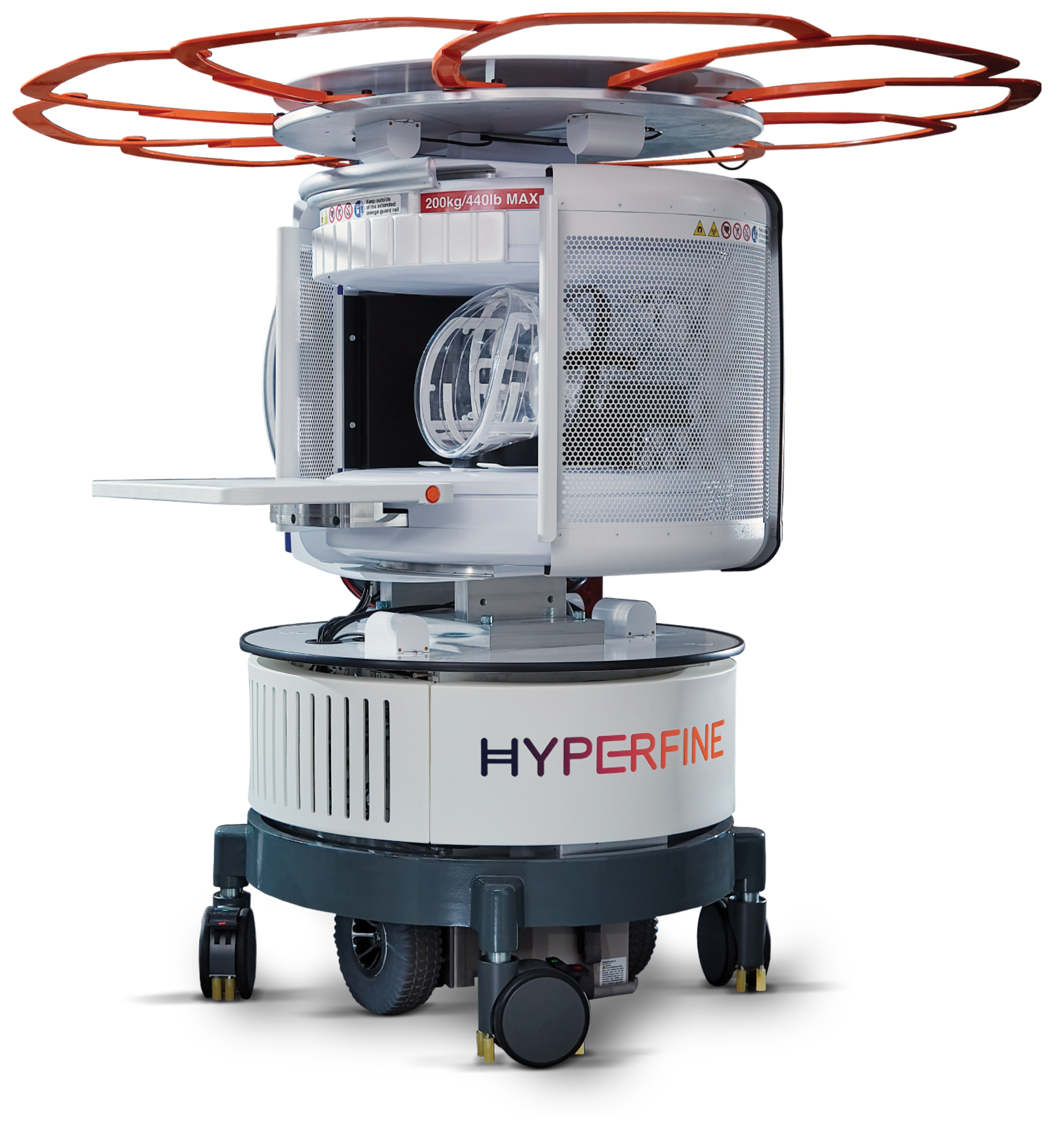The Swoop® Portable MR Imaging System™ and adult patients.
Swoop in the Emergency Department
What to expect during your scan.

The Swoop system is a noninvasive, patient-friendly magnetic resonance imaging (MRI) system used at a patient’s bedside to take pictures of their brain, which doctors use to diagnose various medical conditions. Available at a moment’s notice, the Swoop system is ideal for neuroimaging in intensive care units, pediatric facilities, and emergency departments.
An MRI examination with Swoop is entirely noninvasive. You only need to remove items on or around your head and neck, including jewelry (earrings, necklaces, hair accessories, headphones, earbuds, etcetera). Acoustic noise from the Swoop system is substantially lower than what you hear in a conventional MRI system. And, because noise levels are low, hearing protection is optional. Additionally, because of the open design and low magnetic field of the Swoop system, loved ones can stay right at your bedside—and even hold your hand.
After the Swoop system is set up, you’ll stay in your bed the entire time with your head resting in the transparent ‘helmet’ inside the Swoop system. There will be rhythmic tones resulting from vibrations as the system acquires images during the scan. Depending on the scan sequences selected by your physician, the scan may take around thirty minutes (although it could be shorter).
After the exam, clinicians may remove the Swoop system from your room. After reviewing your images, a doctor will discuss the results with you and recommend the next steps.